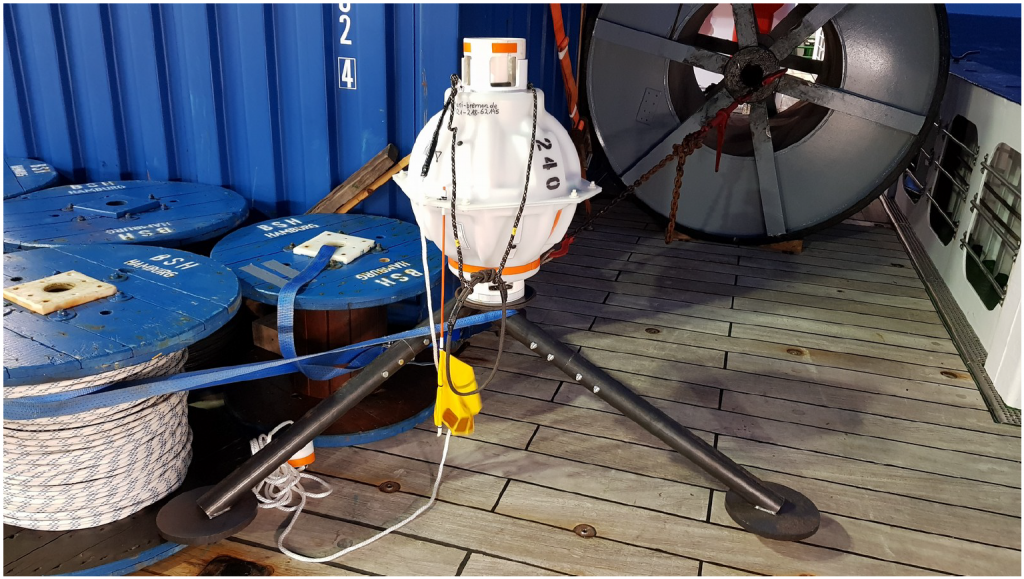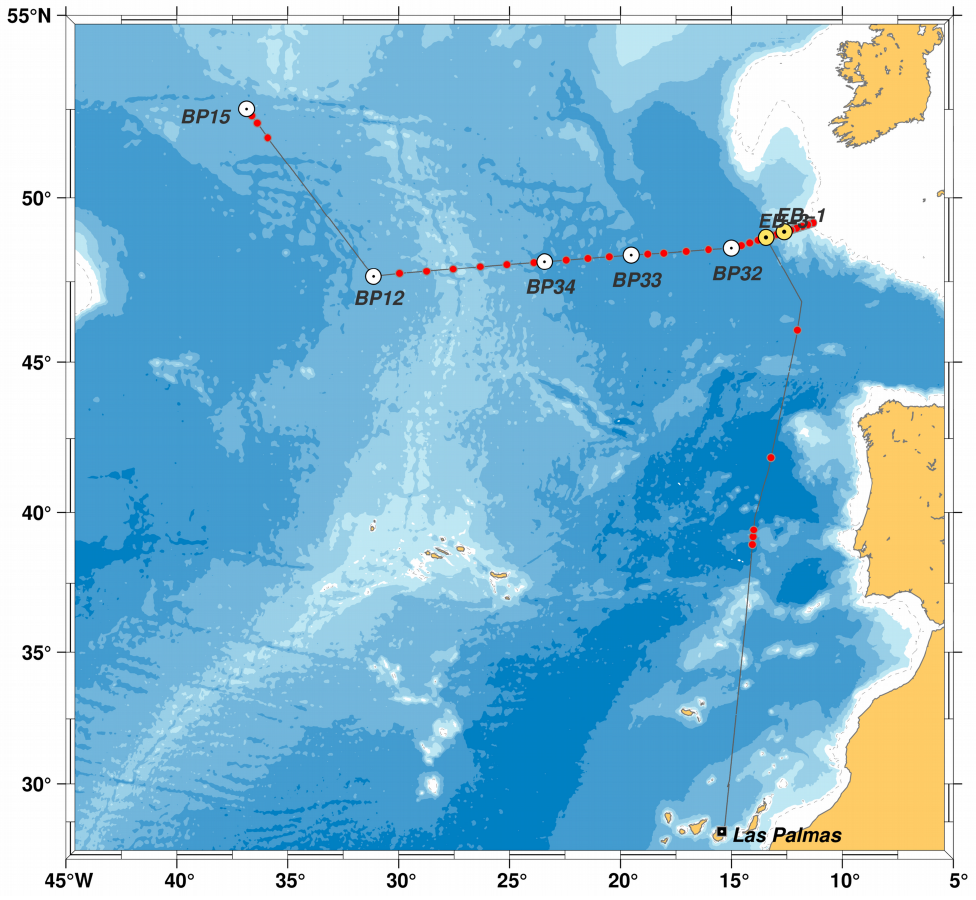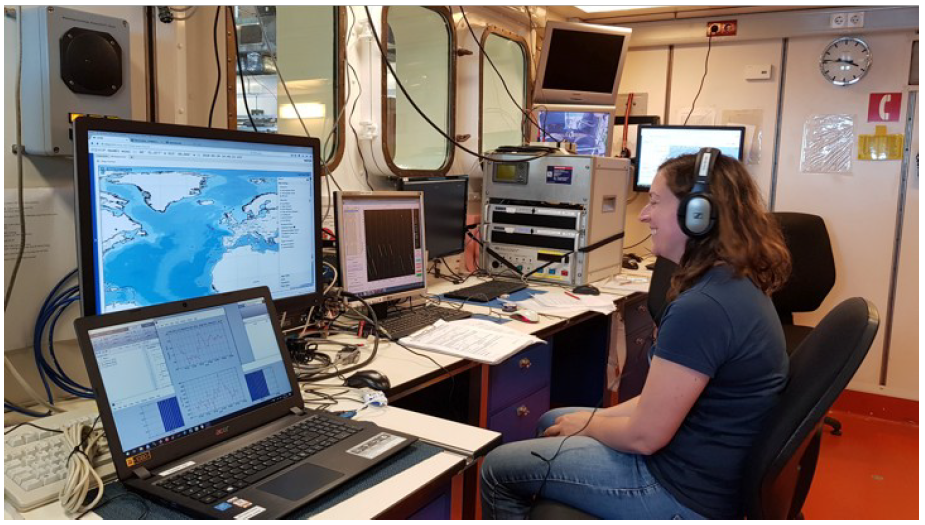27.05.-02.06.2019
In the third week of the “Maria S. Merian” cruise MSM83 we crossed the deep Western European Basin to the west and continued our course along 47°/48°N. Since 2016, there are three so-called PIES at the bottom of this basin, inverted bottom echo-sounders, which are equipped with an additional pressure sensor. Classic echo-sounders are typically installed in the bottom of a ship and serve to determine the respective water depth with the aid of an acoustic signal, which is sent by the ship’s echo-sounder to the seabed and whose echo is received again. Inverted bottommounted echo-sounders are similar in principle but serve a different purpose. They are installed at the bottom of the sea, sending an acoustic signal from the seabed to the sea surface at regular intervals and measuring the time it takes to send the signal and receive the echo. This signal transit time is dependent on the speed of sound in the ocean, and this in turn is shaped by the temperature, salinity and pressure distributions in the water column. Taking the measurement data from two PIES, these run time measurements can be converted into density time series for the respective PIES position under different assumptions and with the help of additional temperature and salinity measurements from the surroundings of the respective PIES. If the water density changes from one PIES to another at the same depth, this is an indication of a current that flows between the two PIES, in our case either from north to south or vice versa from south to north. Also the pressure sensors of the PIES provide important information for this, because also pressure changes between two devices indicate that larger or smaller amounts of water are moved, which is done by currents that can be determined from these pressure changes. We therefore want to examine these currents and use the time series obtained from the PIES to determine the strength and fluctuations of the currents in the deep ocean basins across 47°/48°N.
After receiving data from the easternmost PIES BP-32 at the end of previous week, we visited the two PIES positions BP-33 and BP-34 this week. The data recording can be established via a kind of underwater microphone (the hydrophone). Here, the PIES are communicated with acoustically at depth and asked to send the recorded data. These are divided into different frequency ranges in which the hydrophone listens. On board, they are then recorded with a receiver. The device remains at the bottom of the sea. In bad weather like last year, this method called telemetry is difficult. This year we were able to extract the data from all the East Atlantic PIES, partly by telemetry or by recovering the device, which was then replaced by a device brought along.



Later in the week, we crossed the Mid-Atlantic Ridge and headed into the western basin. At the PIES BP-12, round about 31°W, we turned northwest and drove along the western flank of the ridge towards the Charlie Gibbs Fracture Zone, a deep cut in the ridge system. At the western exit of this fracture zone is the PIES position BP-15. We also successfully recovered the device there last night, and we were able to obtain all the measurement data. Since then, we are on the way back to the 47°/48°N line and continue our CTDO measurement program continuously. The service team of Maria S. Merian has catered for a large buffet for our “mountain festival” on the weekend, for which we all want to thank very warmly. Also the weather is on our side so far. Best wishes on behalf of all cruise participants aboard „Maria S. Merian“,
Dagmar Kieke (Chief Scientist)
